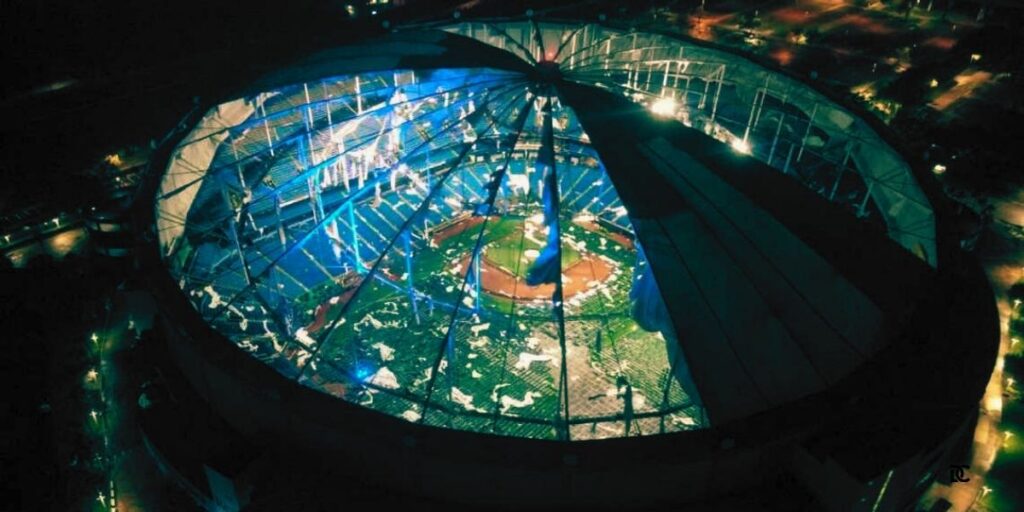Hurricane Milton hit Florida’s Gulf Coast on Wednesday as a Category 3 storm, and with it came destruction and chaos. The roof of Tropicana Field, home of the Tampa Bay Rays, was torn apart by the storm’s powerful winds. The iconic dome, once a symbol of shelter for thousands, could not withstand the forces that battered St. Petersburg overnight.
The defining image of the storm? The Rays’ ballpark lost most of its roof, exposed to the wrath of Milton. What was supposed to be a symbol of strength became a victim of nature’s raw power. Fans of the Rays and residents of the area alike were left in shock.

The facility was set up to be a vital resource, designated as a staging site for first responders and emergency management teams. It was prepared to host up to 10,000 people, with rows of cots lined up on the field. A sense of safety, however temporary, was intended for the space—until Hurricane Milton’s destructive winds changed everything.
The roof of Tropicana Field, made of fabric and polymer panels—akin to fancy fiberglass—was built to endure winds above 115 mph. However, the gusts exceeded expectations, with the region experiencing winds over 100 mph. The structure started to crumble at around 11 p.m., failing in the face of forces that no one had anticipated would be this relentless.
Also Read
The stadium was not meant to be a shelter but a staging point for disaster relief workers. Now, with parts of the roof torn apart, questions are being raised about the extent of the damage inside the stadium. The roof’s metal frame also appears compromised, though it is unclear how badly.
Hurricane Milton has been described as a “not-even-once-in-a-generation storm.” These extreme events are becoming worryingly frequent in the era of human-caused climate change. The three-hour rainfall total in St. Petersburg reached 8.5 inches, an amount normally described as a 1,000-year event—meaning an occurrence so rare, its probability of happening in any given year is one in a thousand.
The destruction was not limited to the stadium. The winds ripped a crane off the roof of a tower under construction, causing severe damage to the offices of the Tampa Bay Times. The storm’s power was so immense that it temporarily blew the water out of Tampa Bay, reversing the surge and leaving boats stranded in the mud.
Hurricane Milton left its mark on Tropicana Field and on St. Petersburg. But in the aftermath, the people are stepping up. As they clean up the debris, patch up the roofs, and comfort one another, they show that true strength is not found in steel or concrete—it is found in people coming together in times of crisis.
The roof may be gone, but the heart of the community remains strong. Florida will rebuild, Tropicana Field will rise again, and the Rays will play once more. The storm has passed, but the resilience of the people will be the lasting memory of Hurricane Milton.






